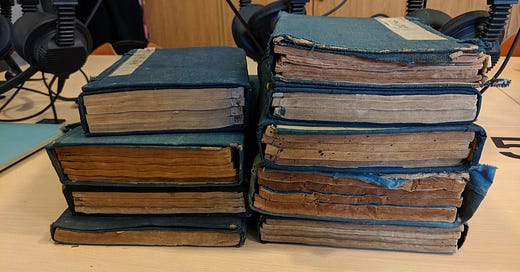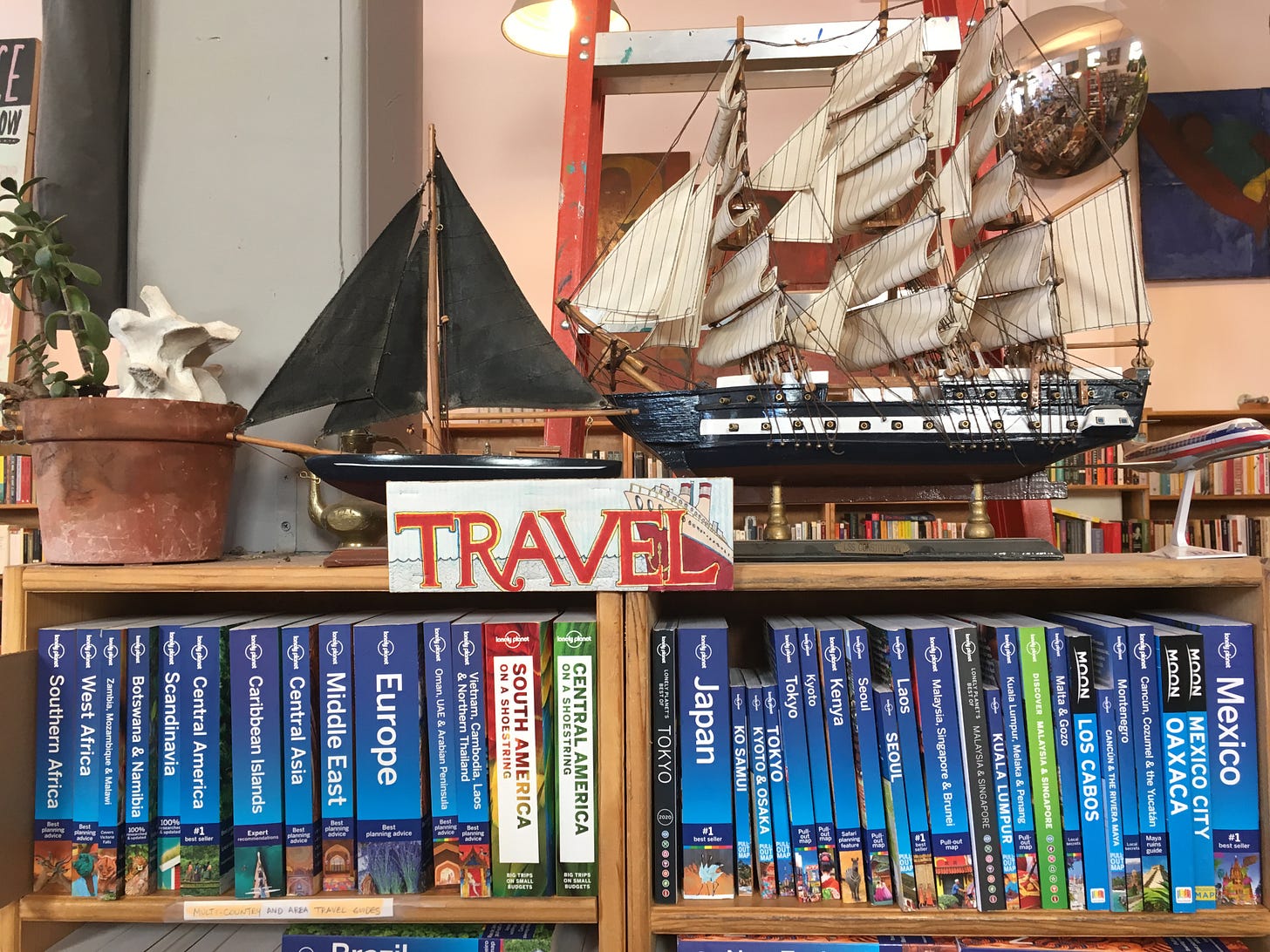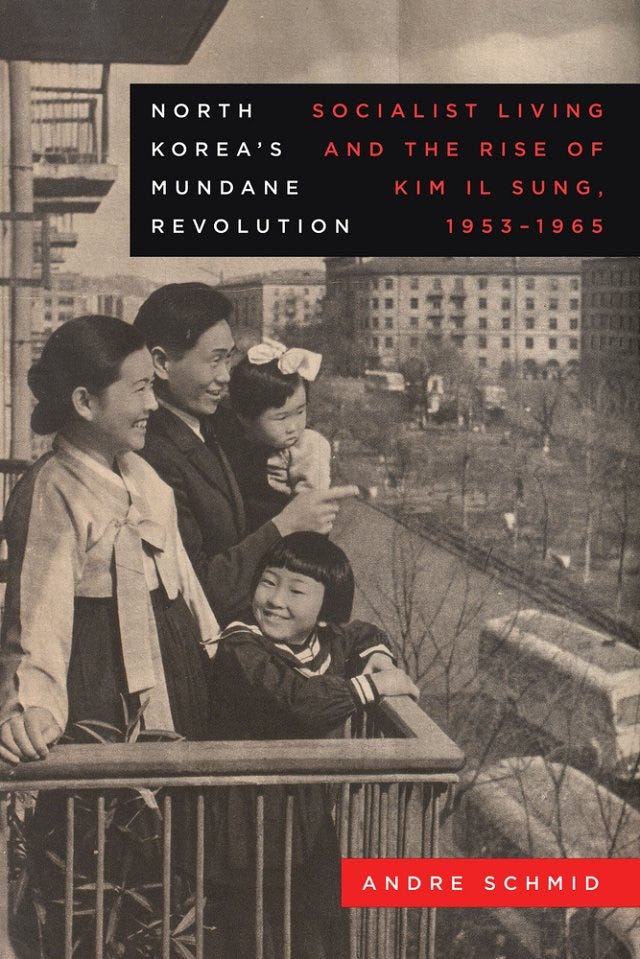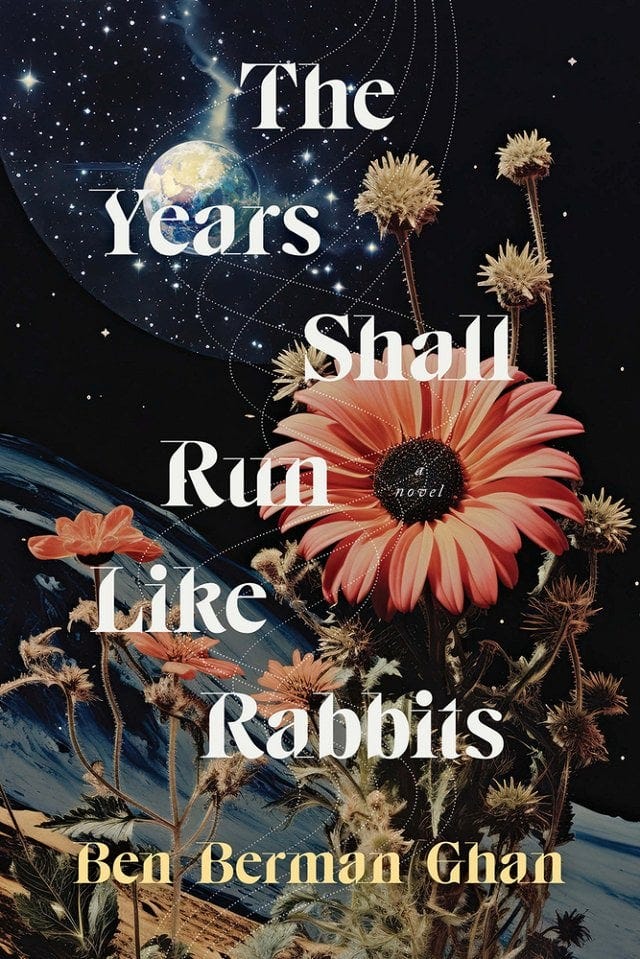“Being a host has given me a wonderful ‘excuse’ to read widely beyond what I actually need to read for my own research. I love diving into new topics and seeking out new books on areas that I might not otherwise wander into.”
In this week’s newsletter:
Bookstore Spotlight
3 Episodes on: National Parks
From Homer to Tolkien
Meet a Host: Sarah Bramao-Ramos
Bookstore Spotlight: Dog Eared Books in San Francisco, California
For this edition of Bookstore Spotlight we chatted with Ryan Smith, the manager of Dog Eared Books in the Mission District of San Francisco. Do you have a favorite bookstore that you want to see featured in the next edition of Bookstore Spotlight? Let us know in the comments!
Dog Eared Books first opened in 1992. It was the second bookstore that owner Kate Razo opened in San Francisco. A general interest bookstore with new and used books, Dog Eared Books has particularly strong literature and art sections, with lots of unique, old pulps and ephemera scattered around the store. Visit them at 900 Valencia Street, and check out their website here. Also, don’t forget to follow them on Instagram and comment that the NBN sent you!
Q: What motivated you to run a bookstore?
A: Well, I love books, and I love old things. I was a literature major in college, and at the time I had a roommate who would go to estate sales to buy vintage furniture. I would usually tag along to buy books to sell to the local bookstores, so when I moved to San Francisco, a used bookstore seemed like a natural fit. I applied at Dog Eared Books about 20 years ago and have been here ever since.
Q: What is the mission of Dog Eared Books? What makes this store unique? A: When Kate opened the store, the Mission District wasn’t a wealthy neighborhood. I think we’re still a great place to find cool things at a relatively affordable price. In addition to our used books selection, we have big tables full of well-curated remainders.
Q: What do you enjoy about running a bookstore, and what have been the biggest challenges?
A: I love digging through boxes of old junk to find hidden treasures. I think one of the biggest challenges for us has been the dramatic changes in the demographics of The Mission District over the last few decades.
Q: What do most people come to your store looking for?
A: Many of the folks in our neighborhood these days are STEM educated, and so we sell a lot of science, math, science fiction, tech, and computer studies books. But of course, literature, art, and poetry have always been our mainstays.
Q: How do you see your bookstore as part of the SF community?
A: We’ve been around for a long time. Kate has been a part of the art and business communities in the Mission for over forty years. I enjoy when folks come in who used to shop here with their parents when they were kids.
Q: Do you host any events at your bookstore? If so, anything coming up we can share with our readers?
A: Since the store is such a shoebox of a space, we can’t hold events in the store. The big event we participate in is Lit Crawl, held every October in the Mission.
Lit Crawl San Francisco is the world’s largest literary pub crawl, and features hundreds of authors and literary organization during its three hours of literary mayhem. The event celebrated its 20th anniversary in 2024. Read more about it here. This year it will be held on Saturday, October 25 so check it out!
Q: What are your top 5 book recommendations at the moment?
A: Here are 5 with a few bonuses
You Dreamed of Empires, by Alvaro Enrigue
Airless Spaces, by Shulamith Firestone (reissued by semiotexte)
Art! Trash! Terror! Adventures in Strange Cinema, by Chris Alexander
Bonus art picks
Fragmentary Forms: A New History of Collage, by Freya Gowrley
2. Anthropomorphic Japan: The Frogs: Vintage Illustrations compiled by 50 Watts Books
Q: Any other local bookstores that you want to give a shoutout to?
A: Our neighbors up in the Castro, Fabulosa Books, are fantastic!
3 Episodes On: National Parks
Listen to Yolanda Youngs discuss her book, Framing Nature: The Creation of an American Icon at the Grand Canyon. In this project she tracks the history of the canyon from the perspective of spatial, physical, and visual culture studies. In doing so, she shows how the ways we think of a place shape how humans use that place. She examines how changes in American visual culture, including the development of postcards, film, and television, shaped tourist expectations.
In Saving Yellowstone: Exploration and Preservation in Reconstruction America, writer and historian Megan Kate Nelson examines how the first scientific expedition into what is now Yellowstone National Park in 1871 was part of a larger struggle over the expansion of federal power during Reconstruction. She highlights the actions of Ferdinand Vandeveer Hayden, Jay Cooke, and a Lakota leader known to English speakers as Sitting Bull, as these three men sought control of Yellowstone and the surrounding area. Tune in to learn more about the history of one of the most-visited national parks!
In National Parks, National Sovereignty: Experiments in Collaboration Drs. Christina Gish Hill, Matthew J. Hill, and Brooke Neely highlight the fraught relationship between Native people and the National Parks Service in the United States due to dispossession, cultural insensitivity, and outright erasure. Hear them discuss this edited collection, which includes case studies that share practical tools and outcomes for use by public historians interested in forging partnerships between scholars and Native communities. Their book serves as a guide to forging new relationships between history institutions and Native communities, and shows that collaboration can be a bridge to telling truer, more democratic, stories.
From Homer to Tolkien: Fantasy and a Tradition of Epic
Guest Essay by Maria Gorczyca
Readers who fall in love with Tolkien’s fantastical world in The Lord of the Rings during their teenage years often remain devoted fans well into adulthood. They are captivated by the adventure, the intricate relationships, and the deep moral dilemmas. Take Professor Anna Vaninskaya, for instance, who describes a sense of melancholic loss as the very element that drew her to Tolkien’s work.
As a relatively young genre, fantasy should have an older sibling—or even an ancient ancestor—in literary history. The most obvious predecessor is the epic, with its rich tradition of fantastical elements. Since Tolkien is widely regarded as one of the founding figures of modern fantasy, it seems fitting to compare his work to that of the father of epic poetry: Homer, whose Iliad and Odyssey stand among the oldest and most enduring masterpieces of European literature.
Both authors drew inspiration from legends and myths, which serve as the foundation of their storytelling. Homer’s works are deeply rooted in Greek mythology, but Tolkien’s world also contains numerous ties to Beowulf— the Old English epic that tells the story of the warrior Beowulf and the monster Grendel, one of the earliest surviving works of English literature.
The Lord of the Rings depicts the wars between Sauron’s servants and the finally united dwarves, elves, and humans. Looking at Tolkien’s biography, one might interpret these fantasy conflicts as a reflection of the real wars he himself endured. This perspective suggests that The Lord of the Rings engages with major historical events, which serve as the background to the personal journey of an individual— as with Frodo. Interestingly, this is also a defining feature of epic literature.
Another similarity within the warfare theme is the inclusion of extensive battle descriptions. Both Homer and Tolkien employ similar stylistic techniques to enhance the dynamism of these scenes, allowing readers to vividly picture the unfolding events. Words like “suddenly” or “just” appear frequently, creating a sense of urgency and building up the tension.
The final similarity is the use of rich similes and hymns dedicated to heroes, often characterized by an elevated, almost solemn style. By definition, an extended simile is known as a Homeric simile, a term that clearly originates from the Greek poet himself. However, Tolkien also employs lengthy similes, particularly when introducing characters—for instance, in his descriptions of the Black Riders.
Literature does not follow a strictly linear path; it draws from the past while incorporating elements of the present. Who knows where fantasy will evolve in the future?
Are you a fan of Fantasy? Check out the New Books in Fantasy and Adventure Channel
Meet A Host: Sarah Bramao-Ramos
Sarah Bramao-Ramos is currently a Research Assistant Professor in the Society of Fellows at the University of Hong Kong. She completed her PhD in History and East Asian Languages at Harvard University. Her work has been made possible thanks to the Bibliographic Society of America’s Short-term Fellowship, the Florence Tan Moeson Fellowship, and the Frederick Sheldon Travelling Fellowship.
Q: Can you briefly introduce yourself including your areas of academic interest?
A: I am a cultural and book historian of Qing China (1644–1911). I’m broadly interested in how people in the early modern world created books, engaged with books, and read books — particularly books written in Manchu, the native language of the Qing rulers. In my work, I explore questions like: what did such books mean and symbolize in the Qing? How did people read Manchu and why? How did these books end up in the collections where they are today?
Q: What channel(s) do you contribute to?
A: I mainly host New Books in East Asian Studies. As the host of a broad “region,” I try to cover books that fall under Chinese Studies, Korean Studies, and Japanese Studies, and I feature books within the disciplines of History and Literary Studies. Because of my own research, however, I do tend to interview a lot of authors about their books on Chinese history — but covering a broad(er) range of books is one of my personal goals for 2025!
Q: How did you first hear about the New Books Network?
A: I stumbled across the New Books Network in 2013 while researching my soon-to-be Masters’ advisor, Carla Nappi, who hosted for the Network for many years. If you have ever listened to Carla’s episodes, you will know that she was an incredibly warm, thoughtful, and insightful host. I distinctly remember listening to her conversation with Elizabeth Perry about revolutionary models and labor movements (Anyuan: Mining China's Revolutionary Tradition), and learning to think about translation through her conversation with Lucas Klein (Xi Chuan's Notes on the Mosquito). I immediately devoured every one of her episodes (and was entirely starstruck when I met her in person). It was by listening to Carla on the NBN that I learned how to read an academic book carefully, how to approach book-length objects, and how to be a historian, so she is responsible for getting me hooked on both the NBN and academia in general.
Q: What made you want to be a host for NBN?
A: About halfway through graduate school, I realized I had completely fallen out of love with reading. As graduate students we were encouraged to attack books, to pick apart interventions, to interrogate evidence skeptically, and to question everything. One of my professors told us that we had to learn to be tiger cubs, to pounce on every new idea and rip it to shreds, and after several years of ‘pouncing’ I was exhausted. I wanted to approach books with curiosity, to think about what academic books had to offer, and to look for the value in new ideas and new approaches, so I decided to try to channel those desires into hosting for the NBN.
Q: What do you enjoy most about being an NBN host?
A: Being a host has given me a wonderful ‘excuse’ to read widely beyond what I actually need to read for my own research. I love diving into new topics and seeking out new books on areas that I might not otherwise wander into.
Q: What episode has been your favorite to record?
A: There have been so many! I loved The City of Blue and White: Chinese Porcelain and the Early Modern World by Anne Gerritsen, and it is probably the episode/book that I get to mention in the classroom the most (because porcelain really did connect the early modern world).
Speaking with Melissa B. Reynolds about her book Reading Practice: The Pursuit of Natural Knowledge from Manuscript to Print was a real treat, because though Melissa works on people living some 500 years ago, she has a wonderful way of framing her work in terms of questions that are very relevant today: how do people access, evaluate, and consider new information? How do people engage in the changing information world around them?
One of my favorite episodes from last year (2024) is the one I did with Andre Schmid about his book North Korea's Mundane Revolution: Socialist Living and the Rise of Kim Il Sung, 1953–1965. Not only was that book a delight to read, but it opened my eyes to an area of Korean history that I knew very little about. Prior to interviewing AndreI had never considered what it might look like to actually do North Korean history, and I’m really excited to read more books on the topic in the future.
I also have a particular fondness for the episode I did with Sarah Schneewind about Shrines to Living Men in the Ming Political Cosmos. That is one of the first episodes I ever recorded, and it is the first one where I thought “Ah, I think that went OK.”
Q: Other than your own, what has been your favorite episode (or channel) to listen to?
A: When I am not reading for work or the NBN, I pretty much exclusively read sci-fi and fantasy: if I am going to read a work of fiction, it had better have spaceships and terraforming, or at least a good furry companion and a lengthy quest. New Books in Science Fiction and Burned By Books have added so many new books to my lengthy TBR list, most recently Orbital and The Years Shall Run Like Rabbits. I’m a big fan of hosts Chris Holmes and Hollay Ghadery in particular — they are wonderful to listen to, and their enthusiasm for the books they have chosen really comes through.
Q: If you could record an NBN interview with anyone, who would it be?
A: Part of what I love about hosting is getting to discover new authors. I love interviewing authors who are passionate about their subject matter, who work with really interesting sources, and who care deeply about writing — fortunately, this description covers practically all of the authors that I speak to!
Q: What advice would you give to anyone interested in becoming a host at NBN?
A: Some people worry that authors won’t want to talk to them. “Who am I, to interview [insert esteemed person here] about their book?” But believe it or not, most people want to talk about their work. If you reach out and show an interest, authors will agree to come on — and if you actually show that you have read their work by asking meaningful questions during the interview, they will be thrilled.
Check out more Sarah Bramao-Ramos’s interviews on the New Books in East Asian Studies Channel below! You can also check out our channels on Chinese Studies, Korean Studies, and Japanese Studies to stay up-to-date on new books focusing on East Asia.















